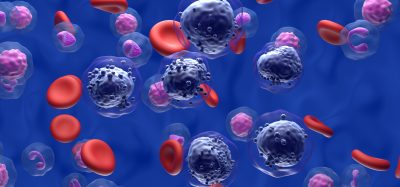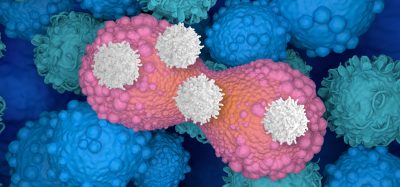CloneSeq-SV: new blood test tracks ovarian cancer recurrence
Posted: 3 October 2025 | Drug Target Review | No comments yet
Researchers have developed a new blood test method, CloneSeq-SV, that tracks treatment-resistant ovarian cancer cells over time. The approach could help predict recurrence and guide targeted therapies.


Several factors make ovarian cancer particularly challenging to treat. The cancer often spreads early at a microscopic level within the abdomen, resulting in diagnosis at an advanced stage. While surgery, chemotherapy and maintenance therapies are initially effective for many patients – most advanced-stage ovarian cancers eventually return.
Now, researchers at Memorial Sloan Kettering Cancer Center (MSK) are aiming to prevent recurrence of the most common and aggressive form – high-grade serous ovarian cancer (HGSOC) – using a new method to track treatment-resistant cancer cells via blood tests. Their findings, published in Nature, could lead to therapies targeting the specific cell populations responsible for recurrence.
Understanding the challenge
“High-grade serous ovarian cancers – or HGSOCs – contain a diverse array of cells, some of which will be sensitive to our best treatments and some of which will be resistant,” says study first author Dr Marc Williams, a postdoctoral researcher who uses computational techniques to study cancer evolution. “Existing methods to monitor these cancers, however, don’t distinguish between one population and the other. So, we decided to build one that could.”
Tracking changes over time with CloneSeq-SV
To study the differences between cells within ovarian tumours and monitor how these populations change over time, the research team developed an approach called CloneSeq-SV. The method combines single-cell whole genome sequencing with targeted sequencing of structural variants – large-scale DNA alterations or rearrangements.
To study the differences between cells within ovarian tumours and monitor how these populations change over time, the research team developed an approach called CloneSeq-SV
This combination allowed researchers to follow the cancer’s evolution from surgical samples through ongoing blood tests, identifying which tumour subpopulations survived treatment and which were eliminated.
“Essentially, we were able to use these structural variants as molecular ‘bar codes,’ which allowed us to track tumour cells’ subpopulations in the bloodstream,” says senior study author Dr Sohrab Shah, who heads MSK’s Computational Oncology Service and directs the Halvorsen Center for Computational Oncology.
The study analysed blood samples from 18 patients with HGSOC, following them from diagnosis through recurrence.
“Using this new method, we could see that the cells that are resistant were present at the time of diagnosis, and that they were able to multiply as cells that were more sensitive to treatment died off,” Dr Shah adds.
Implications for future treatments
CloneSeq-SV demonstrated a clear pattern: the cancer cell subpopulations that dominate during recurrence carry distinct features – including amplifications of cancer-driving genes (oncogenes), chromothripsis (chromosomes shattering and reassembling chaotically) and whole-genome doubling.
“Together, these findings provide new opportunities to develop treatment strategies to attack vulnerabilities associated with those features,” Dr Williams says.
Together, these findings provide new opportunities to develop treatment strategies to attack vulnerabilities associated with those features
One striking example involved a patient who had an exceptional response to trastuzumab deruxtecan, a drug targeting the oncogene ERBB2, and remained free from disease for years. The team discovered that the initial tumour contained a mix of cells with and without ERBB2 amplification. After first-line treatments eliminated the cells without the amplification, the recurring tumour was largely composed of ERBB2-amplified cells.
“And because we have a drug that specifically targets ERBB2, this evolutionary shift left the entire tumour sensitive to a new, targeted treatment,” Dr Shah explains.
Next steps
The researchers plan to study more patients to discover additional patterns that could guide treatment strategies. They also aim to capture a bigger picture of tumour diversity by collecting more samples during follow-up procedures.
Moreover, the CloneSeq-SV approach could potentially be applied to other cancers with high genomic variability, offering new possibilities for future precision medicine development.
Related topics
Bioinformatics, Biomarkers, Cancer research, Computational techniques, Drug Targets, Informatics, Next-Generation Sequencing (NGS), Oncology, Precision Medicine, Sequencing, Therapeutics, Translational Science
Related conditions
Ovarian cancer
Related organisations
Memorial Sloan Kettering Cancer Center (MSK)








